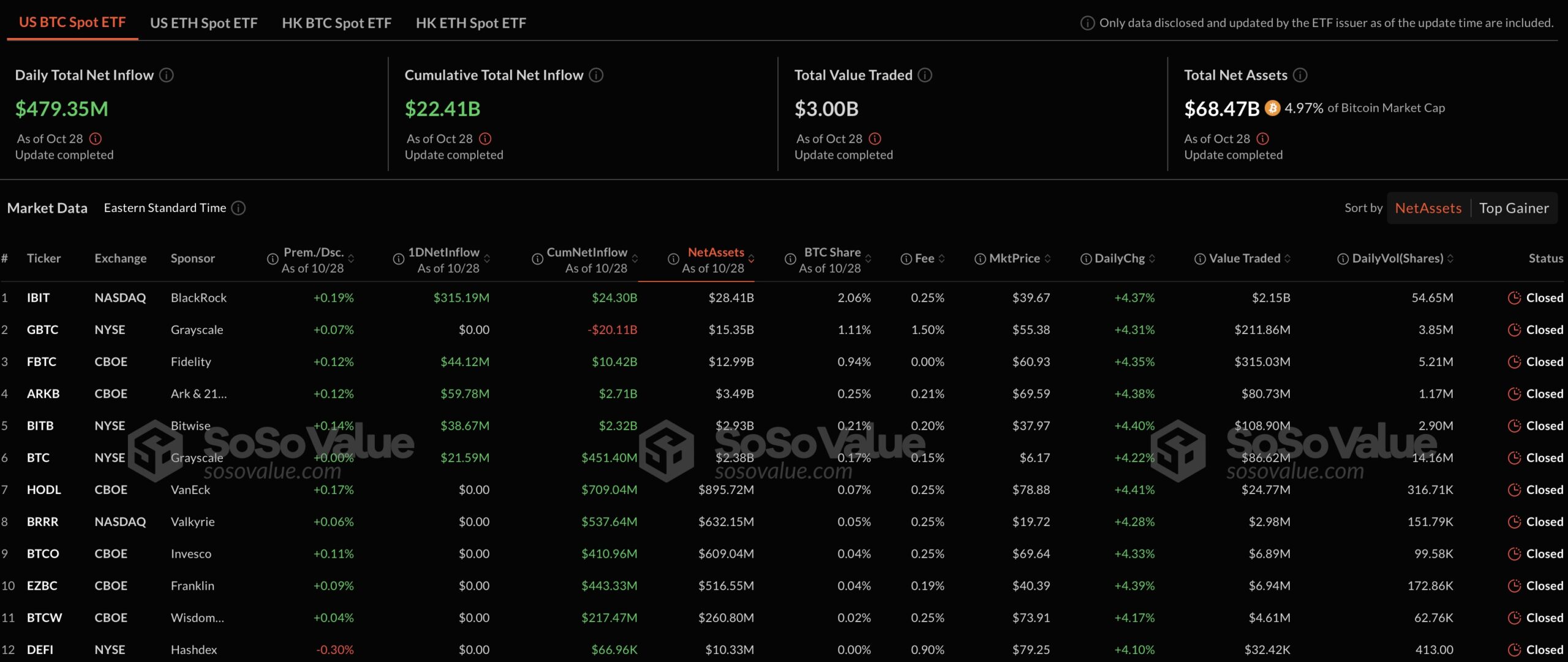in the USA spot Bitcoin  $68,187 ETF‘s attracted a total net inflow of $479.4 million on the first trading day of the week, reaching the highest daily inflow since October 14. Largest spot in terms of net asset size Bitcoin Its ETF, BlackRock’s IBIT fund, led the way with an inflow of $315.19 million, thus maintaining its positive flow for 11 consecutive days.
$68,187 ETF‘s attracted a total net inflow of $479.4 million on the first trading day of the week, reaching the highest daily inflow since October 14. Largest spot in terms of net asset size Bitcoin Its ETF, BlackRock’s IBIT fund, led the way with an inflow of $315.19 million, thus maintaining its positive flow for 11 consecutive days.
Interest in Spot Bitcoin ETFs Continues
BlackRockIn addition to ‘s IBIT fund Arc And 21Shares ARKB, offered in partnership with the ETF, became the second most popular ETF, attracting $59.78 million in inflows. Fidelity‘s FBTC fund attracted $44.12 million in inflows. Bitwise‘s BITB and Grayscale‘s Bitcoin ETFs also recorded flows of $38.67 million and $21.59 million, respectively. No flows were recorded in the other seven spot Bitcoin ETFs.

This activity was supported by ETF trading volume reaching a total of $3 billion on Monday. There is an increase compared to the transaction volume of $2.9 billion on Friday. Bitcoin rose 4.75 percent in the last 24 hours to $71,200, reaching the highest level since June. During this increase Ethereum  $2,505 It gained 5.11 percent and reached 2 thousand 619 dollars.
$2,505 It gained 5.11 percent and reached 2 thousand 619 dollars.
Spot Ethereum ETFs Have Outflows
Unlike record inflows in spot Bitcoin ETFs spot Ethereum ETF’There was a net outflow of $1.14 million on Monday. On Friday, this output was at $19.16 million. Grayscale’s ETHE product attracted attention with an $8.44 million exit, partially offset by a $5.02 million inflow into Fidelity’s FETH product and a $2.28 million inflow into BlackRock’s ETHA product.
Other six spots Ethereum There was no flow to its ETF.
In total, trading volume for nine Ethereum ETFs fell to $187.49 million on Monday, down from Friday’s volume of $189.88 million. This intense interest in spot Bitcoin ETFs shows that investors have increased confidence in Bitcoin and are following movements triggered by volatility.
Disclaimer: The information contained in this article does not constitute investment advice. Investors should be aware that crypto currencies carry high volatility and therefore risk, and should carry out their transactions in line with their own research.








